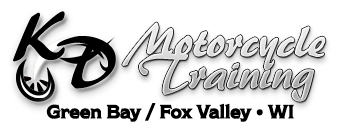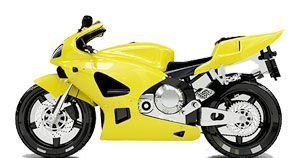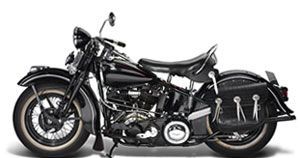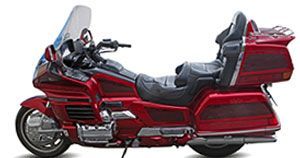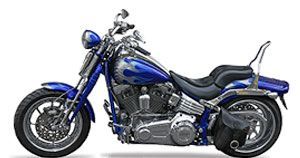Motorcycle License in Wisconsin
Riding a motorcycle through Wisconsin’s scenic landscapes offers an unparalleled sense of freedom. However, this freedom comes with a responsibility to ride safely and legally. Obtaining a motorcycle license in Wisconsin is not just a legal requirement; it’s a step towards ensuring that all riders on the road are equipped with the necessary knowledge and skills to operate their vehicles safely. The process emphasizes understanding traffic laws, mastering motorcycle control, and recognizing the importance of protective gear.
Age and Licensing Requirements
Minimum Age for Riding
In Wisconsin, the journey to becoming a licensed motorcycle rider begins at 16. Teenagers can apply for a motorcycle instruction permit, which allows them to practice riding under certain restrictions. This early start is designed to instill a strong foundation of safe riding practices from a young age. However, riders under 18 must also comply with additional requirements, such as holding the instruction permit for a minimum period and completing a state-approved rider education course.
Class M License Specifics
Obtaining a Class M license, Wisconsin’s designation for a motorcycle license, involves several steps. Applicants must first pass a knowledge test to receive an instruction permit, allowing them to practice riding. The path to a Class M license includes passing a motorcycle skills test or completing a rider course. Unlike other vehicle licenses, the Class M license requires demonstrating specific motorcycle handling abilities and knowledge of motorcycle-specific laws.
Protective Gear and Equipment Requirements
Helmet Laws
Wisconsin mandates helmet use for riders under 18 and all instruction permit holders, regardless of age. The state recognizes helmets approved by the Department of Transportation (DOT) or Snell, ensuring riders wear helmets that meet strict safety standards. This law underscores the critical role helmets play in protecting riders from head injuries.
Eye Protection
Beyond helmets, Wisconsin law requires all motorcycle riders to wear eye protection. This can include face shields attached to helmets, goggles, or glasses with safety lenses. Eye protection not only guards against debris and insects but also enhances visibility by protecting against wind and tears.
Recommended Safety Gear
While not legally required, additional protective gear is strongly recommended for riders. This includes jackets, gloves, pants, and boots designed for motorcycle riding. Such gear offers protection from abrasions, impacts, and the elements, while also making riders more visible to other road users.
Preparing for the Motorcycle Permit Test
Studying for the Test
Prospective riders should thoroughly study the Wisconsin Motorcyclists’ Handbook, which covers everything from traffic laws to safe riding practices. Understanding the material in the handbook is crucial for passing the knowledge test and becoming a safe, responsible rider.
The Permit Test: What to Expect
The motorcycle permit test in Wisconsin assesses knowledge of traffic laws, motorcycle operation, and safety practices. It typically includes multiple-choice questions. Preparation tips include taking practice tests and focusing on areas such as road signs, motorcycle laws, and safety guidelines.
Insights on the Wisconsin Motorcycle Handbook
The Wisconsin Motorcycle Handbook is an essential resource for riders of all levels. It covers key topics necessary for the permit test and safe riding, including traffic laws, motorcycle maintenance, and emergency maneuvers. The handbook not only aids in test preparation but also serves as a comprehensive guide to safe and legal riding in Wisconsin.
Motorcycle Classification in Wisconsin
Wisconsin’s roads are traversed by a diverse array of motorcycles, each classified according to specific criteria that include engine size, design, and intended use. Understanding these classifications is crucial for riders, as it affects licensing requirements, insurance, and compliance with state laws. This introduction sets the stage for a deeper dive into the world of motorcycles in Wisconsin, highlighting the importance of recognizing distinctions between different types for both new and experienced riders.
Differentiating Between Motorcycle Types
Type 1 Motorcycles
Type 1 motorcycles in Wisconsin are characterized by their engine size and power, typically designed for high performance and long-distance travel. These motorcycles require a Class M license, obtained through a process that includes a knowledge test, a skills exam, and, for riders under 18, a mandatory rider education course. The licensing process ensures that riders have the necessary skills and knowledge to safely operate these powerful machines on public roads.
Type 2 Motorcycles
Contrasting with Type 1, Type 2 motorcycles are designed with a focus on passenger capacity and comfort, often used for touring and leisure riding. Despite their differences in design and usage, the licensing requirements for Type 2 motorcycles remain consistent with those for Type 1, emphasizing the universal need for rider education and skill assessment in Wisconsin.
Licensing for Scooters and Mopeds
Defining Scooters and Mopeds
In Wisconsin, scooters and mopeds are differentiated by engine size and speed capabilities. Mopeds, with their smaller engines and lower top speeds, are often subject to different regulations compared to more powerful scooters. Understanding these distinctions is key for riders to ensure they meet the appropriate licensing requirements.
Do You Need a Motorcycle License for a Scooter?
For scooters exceeding certain engine capacities (cc), Wisconsin mandates a Class M license. This requirement underscores the state’s commitment to safety, ensuring that scooter riders are equipped with the knowledge and skills to navigate roads safely alongside larger vehicles.
Special Considerations for Moped Riders
Moped riders in Wisconsin enjoy certain exceptions, such as the allowance to operate with a standard driver’s license under specific conditions. However, age restrictions and other rules apply, highlighting the need for potential moped riders to familiarize themselves with state-specific regulations.
Protective Gear and Legal Compliance
Mandatory Gear for Different Vehicle Types
The law in Wisconsin specifies protective gear requirements for motorcycle, scooter, and moped riders, with variations based on vehicle type. This section will delve into the legal mandates for helmets, eye protection, and other safety gear, emphasizing the role of proper equipment in preventing injuries.
Compliance with Road Rules
Adhering to road rules is paramount for all riders, regardless of the type of motorcycle or scooter. This part of the article will stress the importance of legal compliance, including speed limits, signaling, and lane usage, to ensure safety for riders and other road users.
Preparing for Different Riding Experiences
Training and Familiarization
Before hitting the road, riders should seek training and become familiar with their specific type of motorcycle or scooter. This section will discuss the benefits of rider education courses and personal practice, particularly for those new to riding or transitioning to a different type of motorcycle.
Choosing the Right Motorcycle for Your Needs
Selecting a motorcycle or scooter that aligns with one’s lifestyle, usage, and preferences is crucial. Advice on evaluating personal needs, such as commuting, touring, or leisure, will guide readers in making informed decisions about their two-wheeled companions.
Motorcycle Licensing Process
The journey to obtaining a motorcycle license in Wisconsin is designed to equip riders with the knowledge, skills, and mindset needed for safe and legal riding. This process, while structured, is more than just a series of steps; it’s a foundational experience that prepares individuals for the joys and responsibilities of motorcycle riding.
Obtaining a Motorcycle Instruction Permit
Eligibility and Application
Prospective riders must meet specific eligibility criteria, including a minimum age requirement and, in some cases, completion of a motorcycle safety course. The application process involves submitting necessary documents and fees, with detailed information available through the Wisconsin Department of Transportation (WisDOT).
Study Resources and Preparation
The Wisconsin Motorcyclists’ Handbook is an invaluable resource for permit test preparation, covering laws, safety practices, and riding techniques. Online resources and study guides complement the handbook, offering varied approaches to learning. Effective study habits, such as regular review sessions and practice quizzes, are key to understanding and retaining the material.
Taking the Motorcycle Permit Test
The permit test assesses knowledge of road signs, motorcycle laws, and safe riding practices. Test day advice includes arriving early, staying calm, and carefully reading each question. Managing test anxiety is crucial for a successful outcome.
Practice Riding with a Permit
Riding Restrictions and Guidelines
Permit holders are subject to restrictions designed to ensure safe practice conditions, such as no nighttime riding or carrying passengers. Adhering to these guidelines while practicing in a variety of conditions builds confidence and competence.
Logging Practice Hours
Documenting practice hours helps riders reflect on their progress and identify areas for improvement. This log can also serve as a motivational tool, showcasing the journey from novice to skilled rider.
Upgrading to a Motorcycle License
Preparing for the Skills Test
The skills test evaluates a rider’s ability to handle a motorcycle in various situations. Preparation tips include practicing specific maneuvers, familiarizing oneself with the test format, and seeking feedback from experienced riders.
Scheduling and Taking the Skills Test
Details on scheduling the skills test, including finding locations and understanding what to bring, are crucial for planning. Test day strategies focus on demonstrating competence and confidence through the assessed maneuvers.
Receiving Your Motorcycle License
Passing the skills test leads to the final steps in obtaining a Class M license, including completing any additional paperwork and paying necessary fees. The moment of receiving a motorcycle license marks a significant achievement and the beginning of a new chapter as a licensed rider.
Alternative Paths: Motorcycle Training Courses
Benefits of Completing a Motorcycle Training Course
Motorcycle training courses offer numerous benefits, including a waiver for the skills test and potential insurance discounts. These courses, such as the Basic Rider Course, provide hands-on learning experiences that can significantly enhance a rider’s skills and confidence.
Finding and Enrolling in a Course
Information on finding approved training providers and the enrollment process is essential for those interested in taking a motorcycle training course. Details on expected costs and course content help prospective students make informed decisions.
In conclusion
The journey to becoming a licensed motorcycle rider in Wisconsin is a comprehensive path that emphasizes safety, responsibility, and legal compliance. From the initial steps of passing the permit test to the completion of a motorcycle training course, each milestone is a building block towards not only acquiring a license but also becoming a part of the vibrant and diverse riding community. This journey is an investment in personal growth and safety, offering riders the freedom and camaraderie that motorcycling brings.
Moreover, the variety of motorcycles and scooters available presents an opportunity to celebrate diversity on two wheels. Riders are encouraged to explore their options with a focus on safety, legal requirements, and the sheer joy of riding. Making informed choices about the type of motorcycle to ride, understanding licensing requirements, and adhering to safety considerations are crucial steps in enhancing the riding experience and contributing to the overall safety of the community.
Ultimately, understanding and fulfilling the licensing requirements set forth by Wisconsin is the cornerstone of safe and enjoyable motorcycling. The process is designed to equip riders with the necessary skills and knowledge to navigate the roads safely. Prospective riders are urged to undertake this journey with seriousness and commitment, recognizing that the efforts made in obtaining a motorcycle license are invaluable investments in their safety and the well-being of fellow road users. Together, these steps form a solid foundation for a rewarding and safe riding experience, opening the door to the freedom and joy that motorcycling offers.

